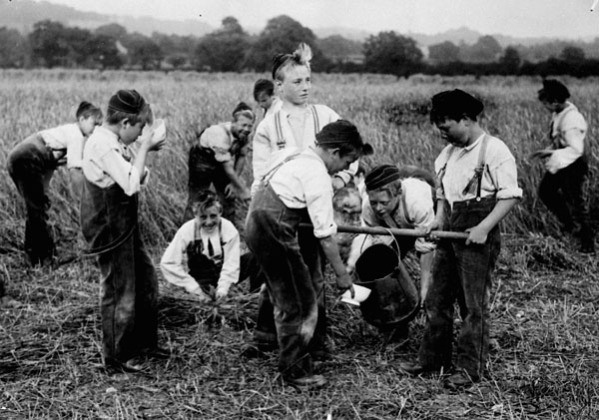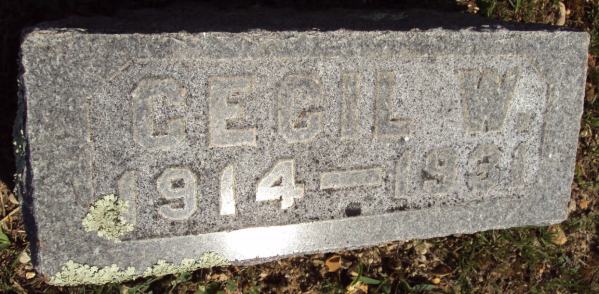This is the beginning of a three-part series about the Boonville Boys’ Reformatory – also known as the Missouri State Training School for Boys. It’s been my pet project, so thanks to anyone who has listened to me blabber on and on about juvenile delinquents for months.
Also – this has quite a bit of disturbing content and is not a happy story.
A hellhole. A viper’s nest. A study in sadism.
These were all used to describe the Missouri Reformatory for Boys, located in Boonville for nearly one hundred years. Although it started with good intentions, it quickly became one of the most feared institutions in the state, and was often used to threaten misbehaving children: “If you don’t behave, they’ll send you up the river to Boonville!”
The Missouri Reformatory for Boys opened its doors on January 15, 1889. It was considered an experiment by progressive minds of the day – child savers wanted “wayward youths” to grow up in a rural environment, thinking that hard work, clean air and green grass would transform troubled young people into model citizens.
The Reformatory was welcomed by Boonville at first. The town donated 168 acres on the east of town to obtain the institution, and the first board of managers included several Boonville citizens. An 1891 editorial from the Boonville Star noted that the citizens of Boonville were proud of the reformatory and Superintendent Colonel Drake. They hoped “many blotted, stained lives may go out from under his care, bright, noble, and good men.”
The institution originally had few inmates and was operated by a family plan. The boys slept in small houses called “cottages,” and the first officer of each cottage – called a “brother” was the head of the household, with his wife acting as the “mother” of the department. Employees of the prison were ranked in military formation: the superintendent was a colonel, high executives were majors and heads of industries were captains.
The Reformatory was self-sufficient, or at least claimed to be: industries were added throughout the years, including a rock quarry, cobbler shop, printing plant, paint and carpenter shops, laundry, ice plant, waterworks, electric generating and distributing system, a cannery, plumbing, a blacksmith shop, a dairy, and even a greenhouse. The boys sold their products to the locals and learned the value of hard work – and, ideally, a trade that would help them once they were released. Baseball and football teams were organized, and there was even a magazine written and published by the inmates named Our Boys.

This picture was taken at the Philanthropic Society Farm School, which was in England. However, this is similar to the Boonville Reform School in terms of dress and labor.
But something terrible was happening at Boonville. Something evil. This great experiment in the 1800s resulted in an institution that was widely reported as one of the worst reform schools in America until its closure in 1983.
So what happened?
Reports about the Missouri Reform School are barely mentioned in the first few years of the twentieth century. Mostly, it was considered a success because the juveniles and young men were not locked up in the State Penitentiary in Jefferson City. But by 1911, an investigation was underway: the conditions at the Reformatory weren’t just bad, they were described by the St. Louis Municipal Commission as “almost intolerable.”
One visitor had this to say about the Reformatory:
“On the surface everything was lovely and apparently the management was all that could be desired. The youths were marched into the dining hall for dinner and grace was said before meal. Then all joined in a song of thanks. It sounded well but any observer could see from the smirks and winks passing from inmate to inmate that it was the ranked hypocrisy on the part of those who participated.”
There was already serious overcrowding at Boonville, but the 1915 state legislature made conditions even worse by opening the institution to first-time male offenders under the age of thirty. This error was not fixed until 1927. The youngest inmate reported during that time period was only seven years old. Boonville was still considered a reformatory by name, but really, it was just another penitentiary.
The boys came from all over Missouri, although primarily around St. Louis and Kansas City. At this time, the majority were white – a 1924 population report notes that about a third of the population were African-American. Crimes ranged from shooting an abusive parent to stealing two dollars to hijacking cars. Some were sentenced because they were “incorrigible” or “delinquent,” while others were simply there because there was nowhere else for them to live. Some of the boys were mentally challenged. The institution tried to keep the ages separated, but they were constantly short-staffed – the 1924 report says there were a staff of 58 men and women to handle 616 inmates – and it was nearly impossible to keep the inmates under control.
Ironically, Kemper Military School – the “West Point of the West” – was only a mile away. It is not unreasonable to suggest that a young person who was caught “jumping on cars,” like the unfortunate Walter Ray of Sedalia, Missouri, would be enrolled in a renowned military school if his parents had money. Instead, he was sent to the Boonville Reformatory, whose conditions resembled a hellhole.
The boys ate and slept barrack-style, with a hundred or more in a cottage designed to hold about thirty inmates. There was an elementary school, but no high school or middle school, and the boys often missed classes anyway to perform dangerous, laborious tasks that helped the institution stay under budget and avoid hiring outside labor.
Alcohol and drug abuse was common by both employees and inmates: according to the 1924 report, homemade wine was made using the Reformatory vineyards; “dope,” or opioids, were somehow smuggled in and used by boys and men of all ages. The prison atmosphere was reinforced by the dress code: the inmates’ heads were shaved, they wore prison uniforms, and Vs were cut in the heels of their shoes to help identify prison escapees, which were frequent. The guards used numbers instead of names to further dehumanize the inmates in their care.
One researcher reported that Boonville’s younger boys lived in decaying buildings that leaked in the rain and were “serious fire-traps.” Inmates often refused to eat because their food was crawling with flies and roaches – often dead ones if bug spray was used just before the meal. There were constant infestations of bedbugs. A visiting Minnesota prison warden found “something radically wrong” at Boonville because the boys “carry themselves with the air of the oppressed and the hopeless”
“I cannot help but feel that these children are given little encouragement and that they hold little hope for the future. The morale is very poor. This is undoubtedly a result of overcrowding, poor food, unsanitary conditions, fear of physical punishment, and an inadequate system of recreation. It is not my policy to coddle criminals, but in this instance we have many children who are not responsible for their condition and who should be treated as children and not as dangerous criminals. The state of Missouri has sadly neglected its delinquent youngsters and under the present system there is no hope for their improvement.”
Locals who lived around the Reformatory had a strange relationship with the institution. The boys grew flowers, raised cattle, baked bread and gardened, selling these products to the community. They were also allowed out on “parole,” which meant they were apprenticed to a farmer in the area in order to learn a trade. But community members also feared the boys, who could turn violent: the 1930 superintendent of Boonville schools was kidnapped and killed by a Reformatory escapee; a taxi driver was forced to drive several boys to the Missouri state line, and was only released alive because one boy had a crush on his daughter. If an inmate escaped, three sharp whistles were broadcasted to alert Boonville residents. They often went out hunting for the boys: there was a $10 reward for each prisoner, dead or alive.
Corporal punishment was forbidden, but it was constantly used – and sometimes resulted in major injuries. Seventeen-year-old Cecil Lafferty was beaten to death by two guards for complaining of an illness while he worked in the garden; his body was discovered by a doctor who had seen his body on a table packed with ice and reported to the state. The guards were suspended but never charged – and they were only punished because the doctor had filed a complaint.

Cecil Lafferty’s grave
Everyone knew the Reformatory was a miserable place, so the administration at the institution was eager for good press. E.J. Melton’s History of Cooper County, published in 1937, celebrates the “remarkably low” escape numbers under Superintendent Harve Gray’s administration and highlights the Reformatory – now renamed the Missouri Training School for Boys – as an “institution of regeneration and hope.” The article praises the “work in the open air and sunshine….associated with nature, the principles of reformation start for many youths from broken homes” (104).
“The remainder for a campus that is landscaped into an object of beauty, with green sweeping lawns shaded by giants of the forest,” says Melton.
This was, of course, a lie.
One year later, the Osborne Association, a national corrections organization, published a four-volume report on conditions in the nation’s industrial schools for delinquent and dependent juveniles. The group found Boonville “among the worst” institutions it inspected in the United States. Although articles about abuse and public outrage were reported in the newspapers for nearly thirty years, nothing had changed.
And nothing really would change, until the close of the training school in the 1980s. But how it got there, and the scandals that resulted, are another story…
.
Hey, the first section’s finished! It only took me three weeks. For a complete list of sources, click Sources Used. If you have a question or concern, feel free to comment below. If you don’t feel like waiting around for Facebook to notify you about the next post on KatyTales, you can subscribe to the website. If you want to see something happy after reading about child abuse, watch this video.
